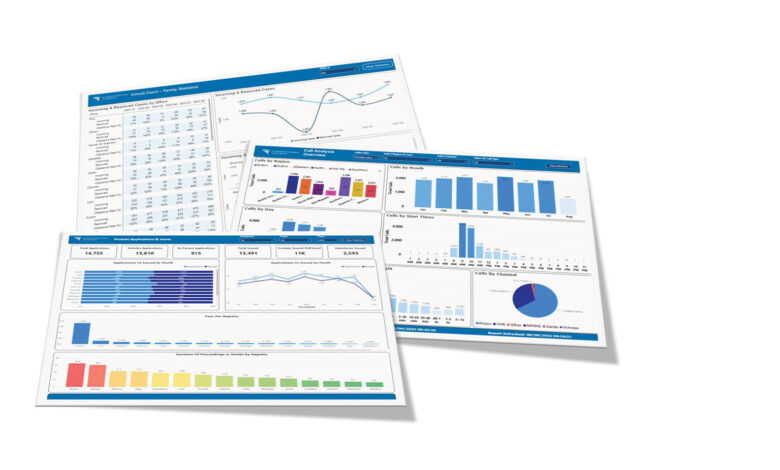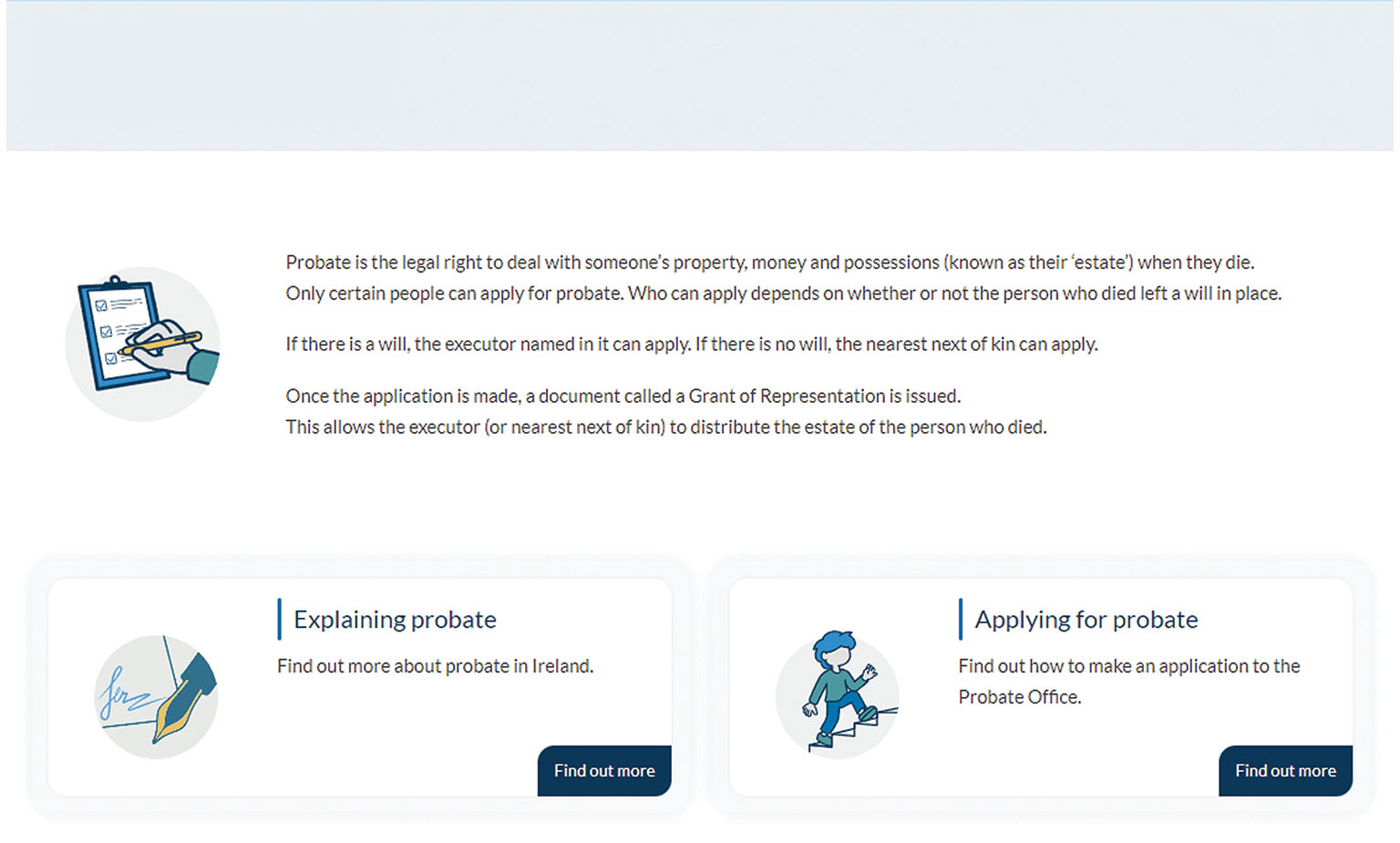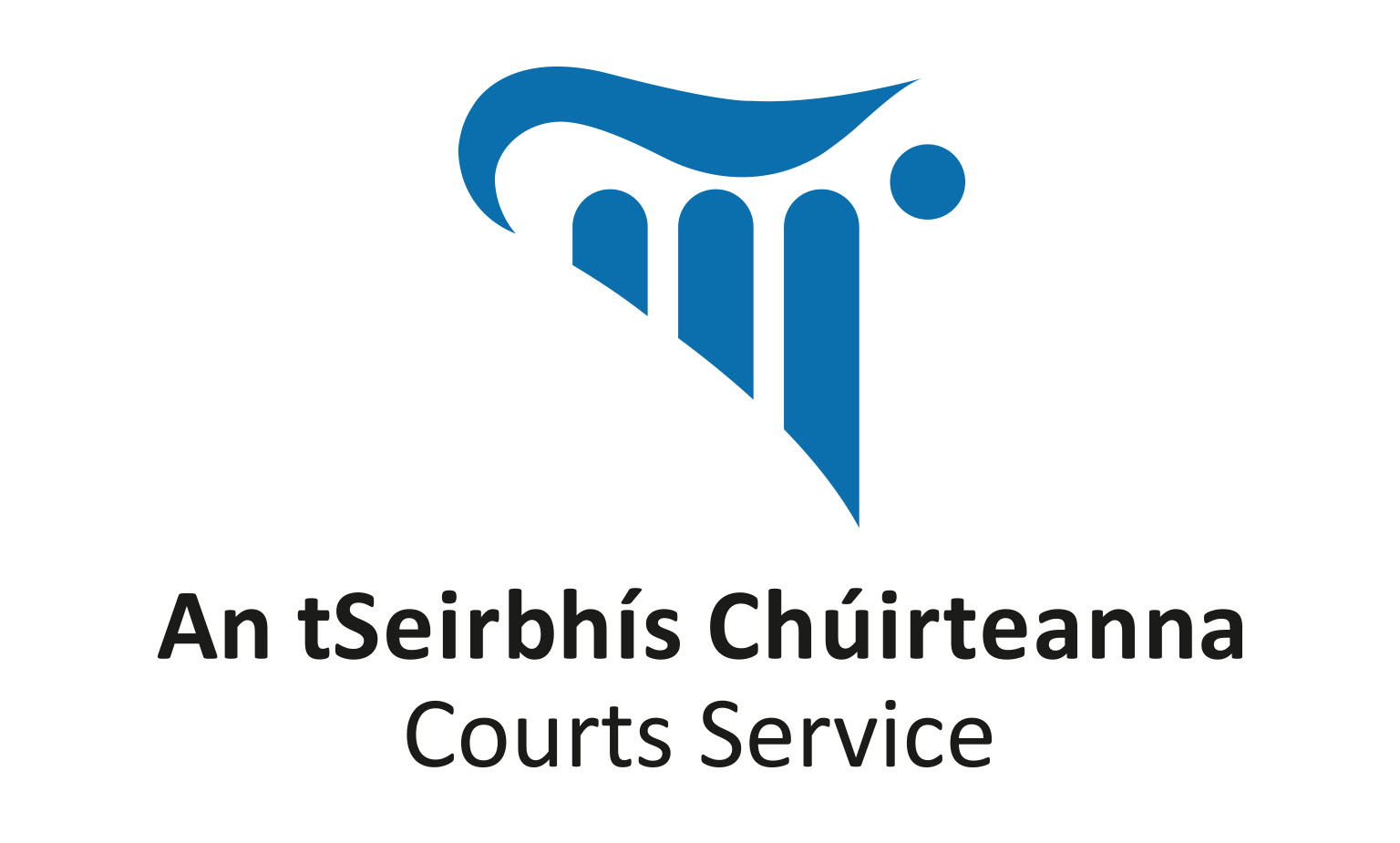Courts Service digitalisation transforming access to justice

The Courts Service continues to introduce digitally enabled services, make evidence-based decisions to transform how we interact with our users, and streamline ways of working.
In implementing greater digitalisation as per our 10-year Modernisation Programme, we are transforming day-to-day operations across the Courts Service, improving the user experience, and ultimately providing Ireland with a modern, high performing courts system.
Improvements in access to data
We have made significant advancements in our data capabilities, which are driving better ways of working across the Courts Service. The implementation of a comprehensive data dictionary has been pivotal in standardising counting rules across our diverse operations, ensuring consistency and accuracy.
Our focus on the importance of data-driven decisions has provided momentum for the development of a range of management dashboards across multiple areas of work. Data dashboards are available for court sittings, wait times, probate, jury, and video court utilisation, among others. All data reporting is now launched from a new single reporting portal accessible by management and will expand over 2024 and beyond.
Improved data availability, reliability, and quality also supports the objectives detailed in the Judicial Planning Working Group recommendations. The Judicial Planning Working Group (JPWG) report, published in February 2023, recommended the appointment of 24 additional judges across the Courts.
To track the impact of the additional judges, a quarterly JPWG data impact report has been developed. This report ensures that key metrics used to measure the impact are captured, tracked, and shared throughout the organisation, with the judiciary and beyond, promoting a data-driven culture.

These initiatives are central to our Modernisation Programme, demonstrating our commitment to support policy making and leveraging data for improved operational and strategic planning.
Open Data Portal
Earlier in 2024, we launched a pilot of our Open Data Portal, which is aimed at making data from the courts easily available and accessible. The launch of this portal highlights our commitment to open data, and to transparency and accessibility, and will facilitate a better use of courts data. The portal is now live at data.courts.ie and is a useful resource for staff, and members of the public.
The portal takes the data from our annual reports and presents it in a simple, straightforward manner and uses graphic tools to look at trends and patterns. The figures on the portal are also available to download for reuse, in line with open-data principles.
Angela Denning, CEO, describes the portal as “a key step” in providing better access to, and a better understanding of, courts data.

“The portal takes the data from our annual reports and presents it in a simple, straightforward manner. It includes data from all our courts – from the District Court right up to the Supreme Court – and is designed to show key statistics, highlight trends and patterns with data, and make the data available for re-use.”
Angela Denning, Chief Executive Officer, Courts Service
New unified IT system to modernise case management
We reached a very significant milestone in 2023 when we introduced our transformational Unified Case Management System (UCMS) to several business areas. This is a significant step for the Courts Service as part of our 10-year Modernisation Programme.
Since 2021, we have been working to bring new digital technology and modern ways of working to the administration of justice, making access to justice easier and quicker to navigate, better responding to the needs of court users.
One of the main goals of UCMS is to unify the IT systems used by staff across different offices. UCMS is replacing many legacy systems with a single modern user-friendly system that looks and feels the same for all staff, regardless of their region or jurisdiction.
This will enable faster and smoother case processing, as well as improved data quality and security. It will provide a coherence to the way we operate and how we gather data to feed into our decision-making. From an end-user perspective, this case management system will be capable of supporting electronic filings, payments, order collection, case tracking and other related services via an online portal.
UCMS was rolled out to the High Court in October 2023, when 85 staff switched to using the new system. A phased rollout in Circuit Court offices is underway with the aim of having UCMS operational for all Circuit Family activity by Q3 2024. The UCMS solution has also supported the administration associated of the Assisted Decision-Making (Capacity) Act 2015, since commencement in April 2023.
UCMS brings several benefits to staff managing cases, such as improved digital record-keeping, bulk actions, pre-populated order templates, validation for data entry, and automatically generated statistics and reports. Overall, staff have found UCMS to be an intuitive and accessible system that enables clear and accurate records.
Improving how we provide information
Building on the improvements to our website, which includes information about family law and civil debt, we have also reviewed and refreshed content relating to probate.
We continue to take a user-centric approach and engaged with personal applicants and practitioners to develop content that is clear, easy to understand, accurate and meets the needs of all those who interact with the probate process.
The content is easy for both legal practitioners and personal applicants to understand the steps involved in the process, what information they will need to provide each step of the way and what they can expect from us. We also have a new feature which enables people to check in advance if they are entitled to apply for probate. This content is available on courts.ie.

For more information on the Courts Service visit www.courts.ie





